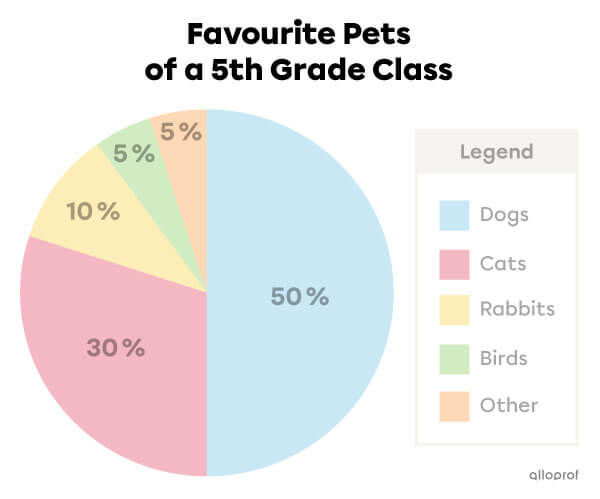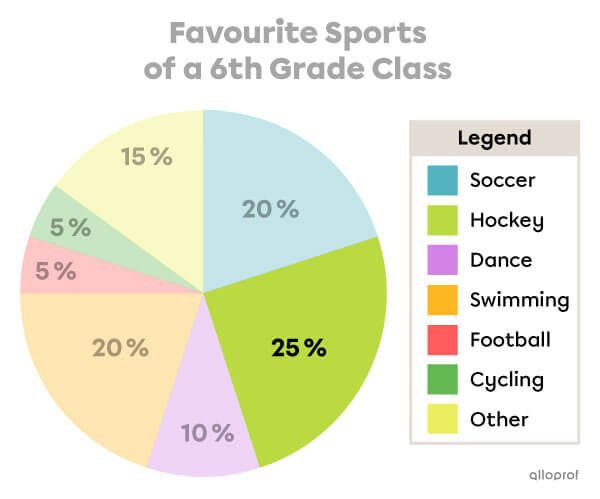A circle graph represents a whole that is divided into parts or into sectors.
The circle represents the whole, which is the total number of students in a 5th grade class. The different sectors represent the percentage of students who prefer a specific pet.

A circle graph always has a title that introduces the subject of the survey.
The title indicates that this circle graph represents the favourite pets of the students in a class of 5th grade.

|
The red sector, the one that represents the students who prefer cats, is |30\ \%| of the class |(100\ \%).| |
The red sector represents |\dfrac{30}{100}| of the class |\left(\dfrac{100}{100}\right).| |
 |
 |
The size of each sector varies according to the part of the whole represented. So, the larger the amount of data represented, the larger the sector will be.
Since the percentage of the yellow sector is higher than the percentage of the green sector, the yellow sector is bigger.

A circle graph has a legend that specifies what each sector represents.
The legend indicates that the blue sector represents the percentage of students whose favourite pet is a dog. The red sector represents the percentage of students whose favourite pet is a cat.

To interpret a circle graph, you need to analyze all parts of the graph while keeping the survey question in mind.
What is the preferred sport among students in this 6th grade class?

|
|
|
 |
Hockey is the most popular sport among the students in this 6th grade class.
Are there more children in the choir with brown or blond hair?

|
 |
|
 |
More children have blond hair.
Fractions in a circle graph can have different denominators. To find out how to compare them, see the Comparing and ordering fractions concept sheet.
Remember that the sum of the percentages represented in a circle graph is always |100\ \%.|
Example:

When I add the percentages in this circle graph, the sum is |100\ \%.|
|22\ \%+ 43\ \%+12\ \%+23\ \%=100\ \%|
To find missing data, you must subtract the sum of the known data
from |100\ \%|.
Find the missing data in the circle graph to identify the percentage of students who prefer milk.

|
|53\ \%+ 3\ \%+ 25\ \%=81\ \%| |
|
|100\ \%-81\ \%=19\ \%| |
The missing data is |19\ \%.| So, |19\ \%| of the day camp kids prefer milk.
